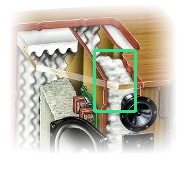I own two programs for crossover modeling – CALSOD by Audiosoft and SoundEasy by Bodzio Software. Interestingly, they are both located in Australia. There really is no comparison between these two programs – SoundEasy is several magnitudes more sophisticated than CALSOD. However it is also painfully hard to learn and understand. For now, I’m not trying to achieve any sort of accurate models. Mostly I want to get a feel for how low the impedance might get with various drivers used in parallel or how low the efficiency might get with various drivers used in series. I know, I know… I’ve already picked the drivers, right? This 4 ohm world we live in is driving me nuts. TDL had the advantage of being able to create any driver they needed – hence the 16 ohm drivers they had available to them. All I want to do for now is make sure I have a reasonable chance to end up with a speaker that will stay mostly above say 3 ohms while reaching say 87 dB efficiency.
So I’m going to use CALSOD, so what? The version I have – 1.30N – was written in 1994. So it is a 16-bit DOS program that uses the character graphics of the original IBM PC (think EGA and VGA). So those were the two problems I had to solve – 16-bit DOS and OEM 437 font.
The first I tried to solve the compatibility mode in Windows 7 Ultimate. To make a long story short – no go. It couldn’t draw the graphs. Otherwise it looked pretty good with Windows 95 compatibility mode.
DOSBox to the rescue. A DOS emulator that runs on Windows, Linux and Mac, DOSBox worked, well, right out of the box. Mostly developed for gamers, it ran CALSOD without a hitch. Great job!
As for the font, I was able to find something called MS Line Draw (linedraw.tff) at this site. Using that along with Wordpad and a font size of 9, I was able to get the user’s guide to format properly. Yippee!
After all that, what does it look like? An old DOS program. A cool old DOS program though:











